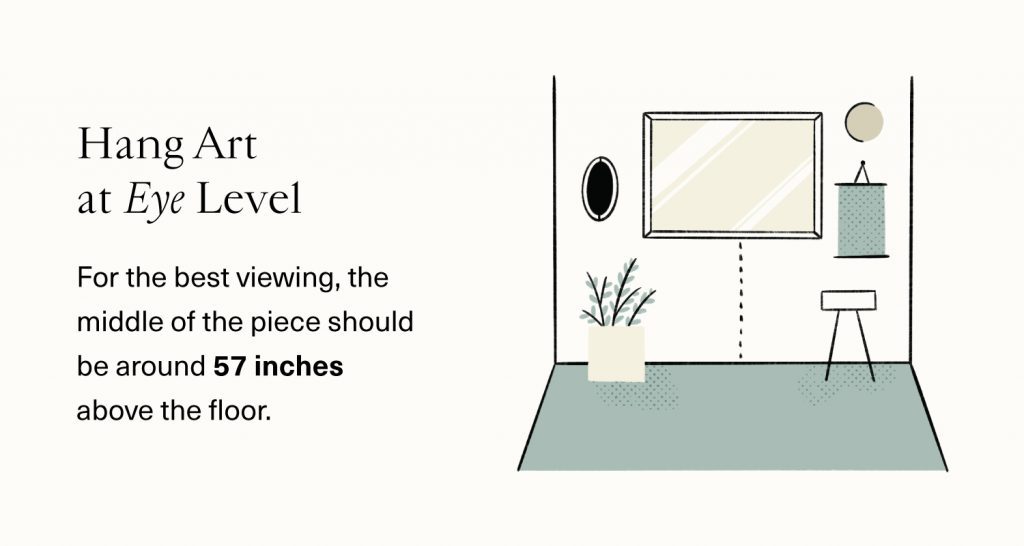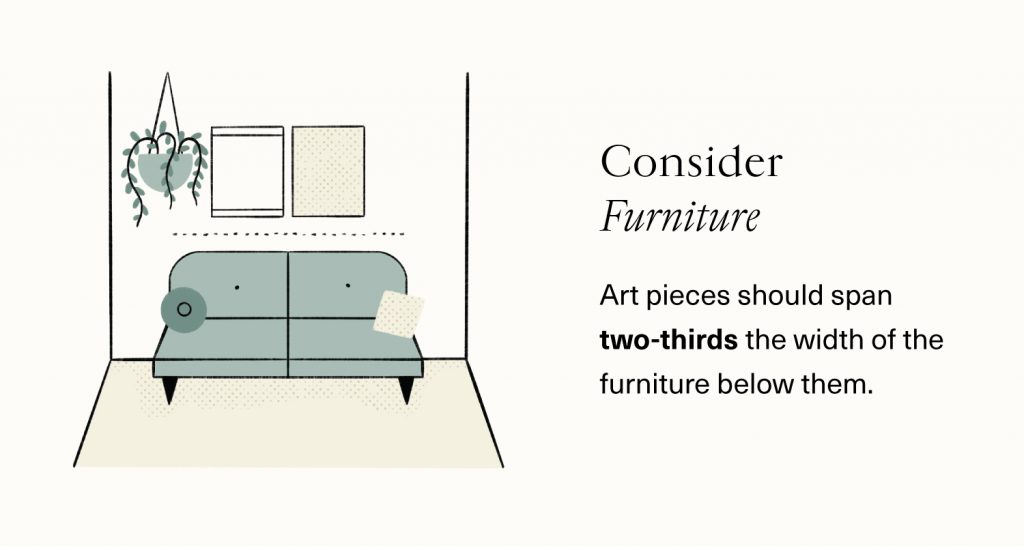Buying and framing paintings for your walls can be exciting, but it’s often difficult to decide where and how to hang up new art. Thankfully, there are some simple rules of thumb to help you decide on the perfect art display that’s just right for you and your home.
Hang Art at Eye Level
If you’re unsure how high to hang up a piece of art on your walls, consider placing the center of the work at a default height of 57 to 60 inches off the ground. This will ensure the center rests near the average eye level, providing the perfect viewing experience.
The exception to this rule is in living rooms, where people are likely to be sitting more often than standing. In a living room, you can hang up a painting a few inches lower, so that sitting guests can still comfortably view the work.
 Consider the Furniture
Consider the Furniture
One way to create a classic and neat living room art display is to hang art above a sofa. When doing so, hang the work a hand’s length from the top of the sofa, and make sure that the art only spans about ⅔ the width of the sofa below. This rule can also apply to art pieces that are placed above a console table. The idea is to keep the art pieces “contained” within the width of the furniture below it, creating a cohesive and unified look.
 Create Visual Balance
Create Visual Balance
A gallery wall composed of multiple pieces of differing sizes and styles can be a wonderfully fun and eclectic way to fill up a wall. However, even gallery walls need an overall sense of unification. When putting together this kind of asymmetrical display, it can get tricky to keep things looking balanced and cohesive.
One easy trick to maintain visual balance in a gallery wall is to use a vertical line as a guide. Before you hang anything up, find the middle of the empty wall. Either imagine or use painter’s tape to mark a line down the middle of the wall, from the floor to the ceiling.
Then, as you hang up your art pieces, maintain the same “weight” of small and large pieces on either side of the vertical line. Step back now and again, using the line to help you visualize the balance on both sides.
 With these tips, you’ll be able to spice up that empty wall and create an easy, beautiful wall art arrangement for your living space.
With these tips, you’ll be able to spice up that empty wall and create an easy, beautiful wall art arrangement for your living space.


















